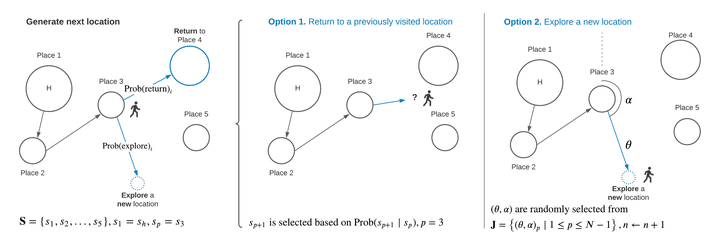 Image credit: Yuan Liao
Image credit: Yuan LiaoAbstract
Knowing how much people travel is essential for transport planning. Empirical mobility traces collected from call detail records (CDRs), location-based social networks (LBSNs), and social media data have been used widely to study mobility patterns. However, these data suffer from sparsity, an issue that has largely been overlooked. In order to extend the use of these low-cost and accessible data, this study proposes a mobility model that fills the gaps in sparse mobility traces from which one can later synthesise travel demand. The proposed model extends the fundamental mechanisms of exploration and preferential return to synthesise mobility trips. The model is tested on sparse mobility traces from Twitter. We validate our model and find good agreement on origin-destination matrices and trip distance distributions for Sweden, the Netherlands, and São Paulo, Brazil, compared with a benchmark model using a heuristic method, especially for the most frequent trip distance range (1–40 km). Moreover, the learned model parameters are found to be transferable from one region to another. Using the proposed model, reasonable travel demand values can be synthesised from a dataset covering a large enough population of very sparse individual geolocations (around 1.5 geolocations per day covering 100 days on average).